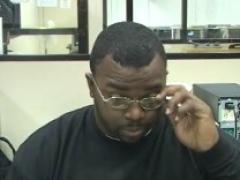Think Alouds: Definition and Uses
August 20, 2008
Think-alouds prompt students to verbalize their thoughts as they solve a problem, case study, or interpret an important text. The focus in the think-aloud is to gain access to student processes when working on an important topic of the course, central to the discipline, not necessarily whether or not they successfully complete the task. Several case studies in the SPECC project make use of think alouds. For example:
“Jay wanted to learn more about how his students learn, so he chose 3 of his students to participate in a think aloud. Then, Jay asked 5 of his colleagues to complete a survey, view and respond to the video-taped think alouds, and complete another survey.”
Glendale Community College (English)
“In watching our students think through exercise sets, we can ‘map’ or ‘make visible’ their learning processes, which can then help us refine our instructional practices to address specific needs.”
____________
Following the path of the student as they work through a problem yields insight into the types of questions he or she asks, the train of thought, an ability to make connections to other course concepts, difficulties or challenges he or she encounters, and his or her use of prior knowledge.
Throughout this Toolkit there are numerous pointers to resources and case studies related to using Think Alouds and student learning. Use the categories or tags to navigate.
______________________
An excellent tutorial on the use of think alouds to make student thinking visible (as part of the development of faculty inquiry reseach plan) is available here, from the University of Wisconsin, La Crosse.
Common Exam, Think Alouds, Uncategorized, Video Evidence Comments Off


